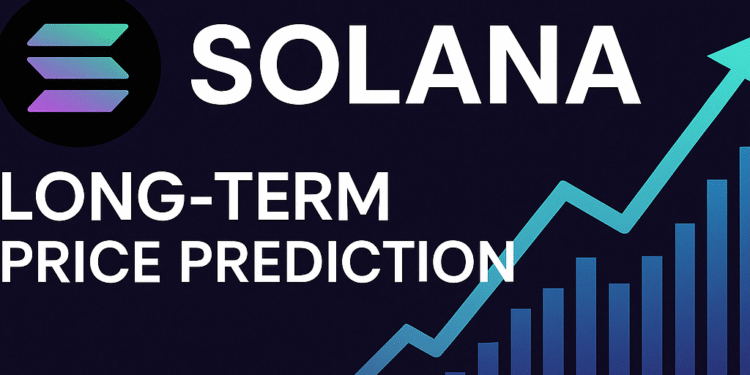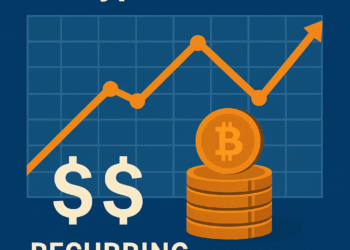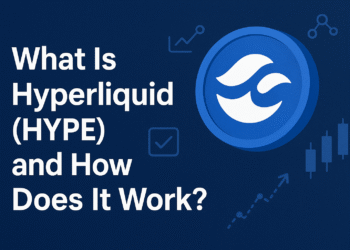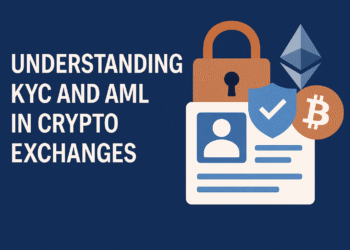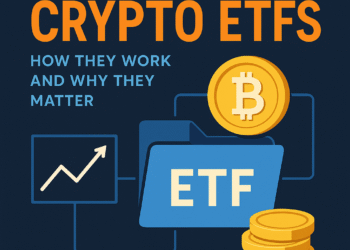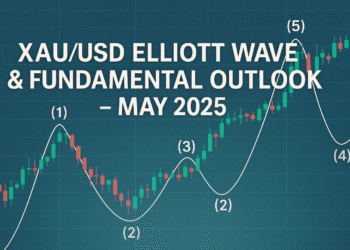Since its launch in 2020, Solana (SOL) has emerged as a powerful force in the crypto space, often touted as a next-generation blockchain capable of challenging Ethereum. But can Solana maintain this momentum through 2030 and beyond? In this article, we’ll explore what the future might hold for SOL—from technical advantages and market trends to expert price forecasts and key risks to be aware of.
🌐 What Is Solana and Why Does It Matter?
Solana is a Layer 1 blockchain designed to offer scalable, decentralized applications (dApps) with unmatched speed and low transaction fees. It distinguishes itself with:
- Proof of History (PoH): An innovative consensus mechanism that timestamps transactions before they’re included in blocks—enhancing scalability.
- High Throughput: Capable of handling over 2,600 transactions per second, making it one of the fastest blockchains.
- Ultra-Low Fees: Average costs per transaction are well below a cent.
- Diverse Ecosystem: Home to 400+ active projects, including DeFi, NFTs, and Web3 applications.
These strengths have positioned Solana as a viable alternative to Ethereum, particularly for developers and users frustrated by Ethereum’s high gas fees and slower processing times.
Solana’s Current Market Position (as of April 2025)
Before jumping into predictions, it’s important to understand where SOL stands today:
| Metric | Value |
|---|---|
| Current Price | $126.31 |
| Market Cap | $65.2 Billion |
| All-Time High | $295.40 |
| All-Time Low | $0.50 |
| 24H Trading Volume | $8.2 Billion |
| RSI (Relative Strength Index) | 46.07 (Neutral) |
| 1-Year Price Change | -8.76% |
Despite being down from its peak, Solana remains a top-10 cryptocurrency by market cap, suggesting strong long-term investor confidence.
Technical Analysis of Solana
Technical indicators provide a snapshot of market sentiment and price momentum:
| Period | Simple Moving Average (SMA) | Exponential Moving Average (EMA) |
|---|---|---|
| 10-Day | $151.65 | $153.74 |
| 50-Day | $200.41 | $185.59 |
| 100-Day | $206.74 | $193.51 |
| 200-Day | $184.40 | $186.20 |
Solana is currently trading below most of its moving averages, indicating a bearish short-term trend. However, its fundamentals and long-term technical outlook suggest a potential rebound.
Solana Price Prediction (2025–2050)
Forecasting cryptocurrency prices is inherently uncertain due to market volatility, but here are consensus estimates from multiple sources:
| Year | Low | Average | High |
|---|---|---|---|
| 2026 | $109.57 | $159.66 | $181.89 |
| 2027 | $104.01 | $145.94 | $165.72 |
| 2028 | $101.39 | $143.84 | $169.66 |
| 2029 | $153.77 | $228.26 | $275.63 |
| 2030 | $146.37 | $217.45 | $249.25 |
| 2035 | $193.30 | $286.03 | $327.55 |
| 2040 | $321.80 | $443.67 | $515.84 |
| 2045 | $407.64 | $598.94 | $709.84 |
| 2050 | $437.32 | $691.11 | $843.24 |
🔍 These estimates indicate that while Solana may fluctuate in the short term, it could achieve exponential growth if blockchain adoption continues and the network maintains technological superiority.
What Do the Experts Say? (In Depth)
Crypto price predictions are inherently speculative, but analysts use a mix of technical indicators, historical data, network metrics, and macroeconomic assumptions to project future valuations. Let’s break down what major sources forecast for Solana (SOL) and why their predictions vary:
DigitalCoinPrice
- 2030 Prediction: ~$3,459.91 per SOL
- Rationale: Strong projected user adoption, improving scalability, and increasing use cases across DeFi, NFTs, and gaming. DigitalCoinPrice uses algorithmic models that assume market recovery post-2025 and exponential blockchain growth.
WalletInvestor
- 2025 Prediction: ~$661 per SOL
- 2030 Prediction: Data not explicitly provided but expected to trend upwards.
- Rationale: WalletInvestor is more conservative and bases its forecast on technical chart analysis. It suggests that SOL will regain momentum over the next couple of years but will experience volatility from regulatory pressures and market corrections.
PricePrediction.net
- 2030 Prediction: ~$2,586 per SOL
- Rationale: Assumes increasing crypto adoption and diminishing influence of central banks and fiat currency over time. The platform’s model reflects a world where decentralized ecosystems play a bigger economic role, benefitting projects like Solana with strong L1 infrastructure.
TradingBeasts
- 2025 Prediction: ~$123 per SOL
- Rationale: Known for conservative estimates, TradingBeasts sees SOL struggling in the near term due to persistent market instability and weak short-term demand. Their forecasts often incorporate recent crashes heavily and weigh risk over potential.
💡 Summary: The wide range of predictions—from ~$120 to over $3,400—highlights how important variables like market sentiment, technological advancement, and regulation are in long-term forecasting.
Why Did Solana Crash? (Detailed Breakdown)
Solana has faced multiple severe setbacks, many of which have dramatically influenced investor confidence and price performance:
1. FTX and Alameda Exposure
- Solana had significant financial exposure to FTX and its sister firm Alameda Research, both of which collapsed in late 2022.
- The Solana Foundation held millions in FTT tokens, SRM (Serum project tokens), and FTX stocks.
- This led to a rapid drop in Total Value Locked (TVL) in Solana-based DeFi—from over $600 million to ~$340 million within days.
- As FTX and Alameda unwound, they dumped large volumes of SOL, further crashing the price.
2. Network Outages
- Solana’s performance advantage comes with trade-offs in decentralization and network complexity.
- The blockchain suffered multiple outages (some lasting several hours or days) due to consensus bugs, congestion, and attacks.
- This eroded trust among developers, users, and investors who rely on consistent uptime, especially for DeFi protocols.
3. NFT Market Decline
- Solana was a major hub for NFT activity during the 2021–2022 boom.
- As interest in NFTs dropped sharply, many popular projects migrated to Ethereum or shut down altogether.
- This reduced Solana’s active user base and transaction volume.
4. Perception Issues
- Being branded as “VC-backed” and closely associated with Sam Bankman-Fried caused reputational harm.
- Many investors viewed it as centralized and risky, despite its technical strengths.
Is Solana Still a Good Investment?
Solana is a high-risk, high-reward investment with promising fundamentals but significant challenges. Let’s explore both sides:
Reasons to Invest in Solana
- High Throughput and Speed: Currently processes up to 65,000 TPS (theoretical) and has real-world speeds near 2,600 TPS. Ideal for applications requiring fast settlement, such as trading platforms and games.
- Ultra-Low Fees: Transactions cost fractions of a cent, far cheaper than Ethereum, especially for high-frequency apps.
- Growing Ecosystem: Over 400+ active projects spanning DeFi, NFTs, Web3 gaming, and payments.
- Innovative Architecture: PoH (Proof of History) combined with PoS (Proof of Stake) is unique and built for global scalability.
- Developer Momentum: One of the top chains in terms of GitHub commits and hackathon participation.
Risks and Concerns
- Unstable Infrastructure: Frequent network crashes have raised questions about long-term stability.
- Reputation Damage: Association with FTX has tarnished its brand, especially among institutional investors.
- Strong Competition: Ethereum’s L2s, Arbitrum, Optimism, Polygon, and even newer L1s (like Sui, Aptos) offer similar features.
- Regulatory Uncertainty: If labeled a security by regulators, SOL could face delisting on U.S. exchanges or other penalties.
Bottom Line: If Solana can fix its infrastructure issues and maintain decentralization while scaling, it has the potential to remain a top-5 blockchain long-term. But it’s not without considerable risk, especially for short- to mid-term investors.
How to Buy Solana (SOL) – Step-by-Step
Whether you’re a first-time buyer or a seasoned trader, here’s how to securely buy SOL:
Step 1: Choose a Reputable Exchange
Popular exchanges include:
Tip: Use platforms with strong security features, such as 2FA, cold storage, and clear compliance procedures.
Step 2: Create and Verify Your Account
- Sign up using your email.
- Complete KYC verification (identity documents, proof of residence).
- Set up 2-Factor Authentication (2FA).
Step 3: Fund Your Account
- Add fiat currency via bank transfer, debit/credit card, or PayPal (depending on the platform).
- Alternatively, transfer crypto like BTC or ETH and trade for SOL.
Step 4: Buy Solana
- Search for SOL/USD or SOL/USDT trading pair.
- Enter the amount of SOL you want to buy.
- Place a market order (immediate execution) or limit order (buy at a specific price).
Step 5: Store Your SOL Securely
- For long-term storage, use a hardware wallet (Ledger, Trezor).
- For short-term trading, you can keep funds in your exchange wallet but be aware of risks.
FAQs – Frequently Asked Questions About Solana
1. What will Solana be worth in 2025?
Predictions range widely:
- Conservative: ~$123 (TradingBeasts)
- Moderate: ~$661 (WalletInvestor)
- Optimistic: ~$1,200+ (DigitalCoinPrice) Key factors include blockchain adoption, developer activity, macroeconomic trends, and regulatory clarity.
2. What is Solana’s price prediction for 2030?
SOL could reach anywhere between:
- $217 – $3,500+, depending on:
- Technological upgrades (fixing outages, improved consensus)
- Widespread use in DeFi, gaming, and NFTs
- Institutional interest and retail adoption
3. Is Solana safe to invest in?
Solana is considered technically sound, but faces issues with decentralization and reliability. It’s suitable for risk-tolerant investors who believe in blockchain scalability.
4. Will Solana outperform Ethereum?
Unlikely in the near term. Ethereum enjoys:
- First-mover advantage
- Broader adoption
- Stronger decentralization However, Solana may outperform Ethereum in specific niches like Web3 gaming and high-speed microtransactions.
5. Should I hold SOL long-term or trade it short-term?
- Long-Term Hold: If you believe in Solana’s technical edge and expect blockchain adoption to rise.
- Short-Term Trading: If you’re targeting volatility with technical analysis and news-based events.


